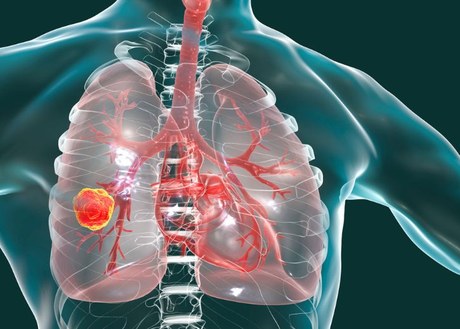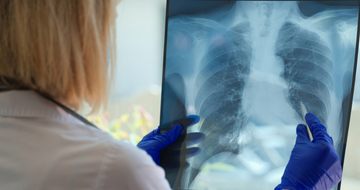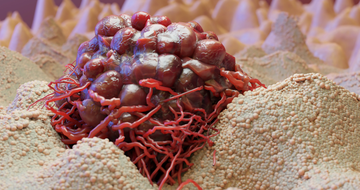FDA grants accelerated approval to adagrasib for KRAS G12C-mutated NSCLC
What is the potential role of adagrasib in treating KRAS G12C-mutated NSCLC?1-3
- Adagrasib is indicated for patients with metastatic or locally advanced non-small cell lung cancer (NSCLC) with a KRAS G12C mutation who have received at least one prior systemic therapy.
- KRAS G12C mutations are found in approximately 14% of patients with NSCLC.
- Adagrasib irreversibly binds to the KRAS G12C, locking it in its inactive state.
Sotorasib is the only other FDA-approved medication to treat NSCLC with a KRAS G12C mutation.
Adagrasib’s accelerated FDA approval was based on the KRYSTAL-1 multicenter, single-arm, open-label clinical trial.
- The study involved 116 patients, 98.3% receiving previous chemotherapy and immunotherapy. Patients were treated with adagrasib 600 mg twice daily, the recommended starting dose.
- The primary endpoint was objective response. Secondary endpoints included duration of response and progression free survival.
- Objective response rate: 42.9%
- Median duration of response: 8.5 months (95% CI, 6.2 to 13.8)
- Median progression-free survival: 6.5 months (95% CI, 4.7-8.4)
NCCN recommends adagrasib and sotorasib for subsequent therapy after disease progression on prior chemotherapy and immunotherapy.
- Due to a similar mechanism of action, the National Comprehensive Cancer Network (NCCN) doesn’t recommend switching from adagrasib to sotorasib or vice versa.
- No studies have been conducted to compare adagrasib vs. sotorasib.
- Adagrasib has shown favorable pharmacokinetics, including central nervous system (CNS) penetration.
What role can the pharmacist play in the management of patients on adagrasib? 2-5
Pharmacists should verify the proper dose for the patient and counsel on administration.
- The starting dose of adagrasib is 600 mg orally twice daily.
- No dose adjustments are needed for baseline hepatic or renal impairment.
- Adagrasib can be taken with or without food, must be swallowed whole, and shoudn’t be crushed, chewed, or broken.
Drug drug interactions exist with adagrasib and other medications.
- Strong CYP3A4 inducers
- Avoid use with strong CYP3A4 inducers as concomitant use may decrease the efficacy of adagrasib.
- Strong CYP3A4 inhibitors
- Avoid use with strong CYP3A4 inhibitors until adagrasib concentration levels have reached a steady state (~8 days). Concomitant use may lead to adverse reactions related to adagrasib.
Sensitive CYP3A4, CYP2C9, and CYP2D6 Substrates
- Avoid concomitant use with sensitive CYP3A4, CYP2C9, and CYP2D6 substrates where minimal concentration changes may lead to serious adverse reactions. Concomitant use increases exposure for sensitive CYP3A4, CYP2C9, and CYP2D6 substrates.
P-gp Substrates
- Avoid concomitant use with P-gp substrates where minimal concentration changes can lead to serious adverse reactions. Concomitant use increases the exposure of P-gp substrates.
Adagrasib adverse effects
- The most common adverse events (>20%) associated with adagrasib include diarrhea, fatigue, vomiting, cough, pneumonia, dizziness, constipation, abdominal pain, and QTc interval prolongation.
- Most common electrolyte abnormalities (>25%) associated with adagrasib include decreased lymphocytes, increased aspartate aminotransferase, decreased sodium, decreased hemoglobin, increased creatine, decreased albumin, increased alanine aminotransferase, increased lipase, decreased platelets, decreased magnesium, and decreased potassium.
- The most common dose adjustments for toxicities in patients included hepatotoxicity, fatigue, nausea, diarrhea, vomiting, and renal impairment.
Clinical Pearls1, 4-6
Adagrasib is associated with a moderate or high emetic potential, so antiemetics should be considered to prevent nausea and vomiting.
Adagrasib is currently available in 200 mg tablets. The recommended dose is 600 mg twice daily, so patients must take six tablets daily to get to the recommended starting dose.
The FDA also approved QIAQEN therascreen KRAS RGQ PCR kit (tissue) and the Agilent Resolution ctDx FIRST Assay (plasma) to be used as diagnostic tools with adagrasib. Tumor tissue should be screened if no mutation is detected in a plasma specimen.
Patients are advised not to breastfeed while on this medication
Mirati and Me support program is available (https://miratiandme.com/) for patients who are on adagrasib. They offer coverage and access services, financial support, educational support, emotional support, and more.
References
1.Center for Drug Evaluation and Research. FDA grants accelerated approval to adagrasib for Kras G12c-mutated NSC.
https://www.fda.gov/drugs/resources-information-approved-drugs/fda-grants-accelerated-approva l-adagrasib-kras-g12c-mutated-nsclc. Accessed June 9, 2023.
2.Jänne PA, Riely GJ, Gadgeel SM, et al. Adagrasib in non–small-cell lung cancer harboring a krasg12c mutation. N Engl J Med. 2022;387(2):120-131.
3.National Comprehensive Cancer Network. Non-Small Cell Lung Cancer (Version 3.2023). https://www.nccn.org/professionals/physician_gls/pdf/nscl.pdf. Accessed June 9, 2023.
4.Krazati (adagrasib) [package insert]. San Diego, CA: Mirati Therapeutics Inc.; 2022.
5.Lexicomp Online, Lexi-Drugs Online. Waltham, MA: UpToDate, Inc.; https://online.lexi.com. Accessed June 9, 2023.
6.Home. Mirati & Me. November 10, 2022. Accessed June 9, 2023. https://miratiandme.com/.



